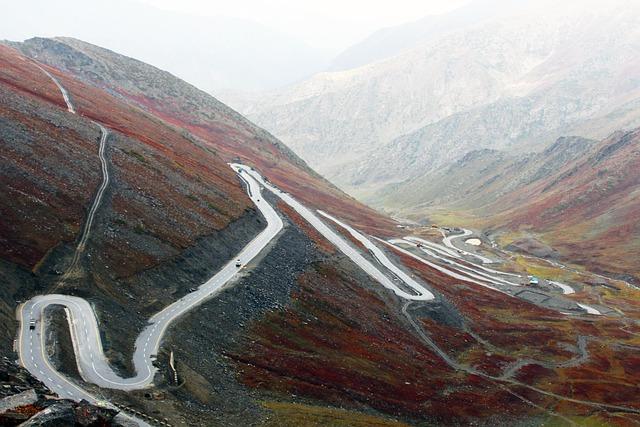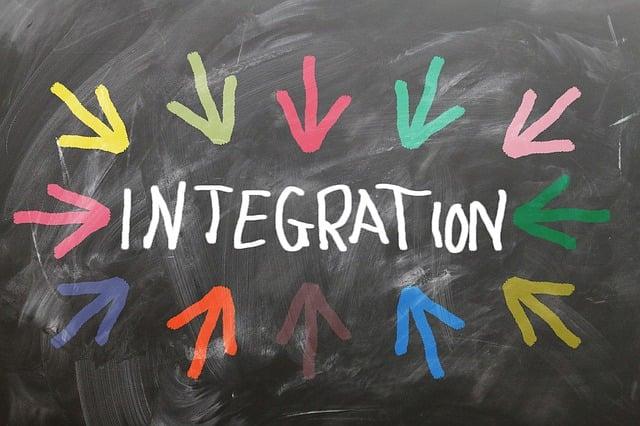As the world becomes increasingly interconnected, the movement of people across borders tells intricate stories of aspiration, survival, and identity. Among these narratives lies the journey of Pakistan’s diaspora—a tapestry woven from the threads of history, culture, and opportunity. From the bustling streets of Karachi to the distant shores of North America, Europe, and beyond, millions of Pakistanis have ventured far from their homeland in search of a better future. This article embarks on a journey to explore the shifting trends of immigration from Pakistan, shedding light on the socio-economic factors that drive this movement, the diverse experiences of the diaspora, and the profound impact they have on both their host countries and their native land. Join us as we delve into the complexities of a migration narrative that resonates deeply across generations and geographies.
Understanding the Dynamics of Pakistans Diaspora: A Historical Perspective
Pakistan’s diaspora is deeply rooted in a historical context that reflects the intertwining of socio-economic conditions and global migration patterns. From the early waves of migration during the British colonial era, when laborers sought opportunities abroad, to the more recent movements driven by conflict and economic aspirations, the journey of Pakistanis has been shaped by both push and pull factors. The labor migration of the 1960s and 1970s saw many seeking employment in the Gulf states, while political upheavals in the 1980s propelled others towards Western countries. This pattern illustrates a complex narrative of resilience and adaptation, as communities have evolved and thrived in diverse settings across the globe.
The contemporary landscape of Pakistan’s diaspora is characterized by a diverse array of experiences and contributions to both the host and home countries. Today, Pakistani communities can be found across various regions, collectively forming a significant cultural mosaic. Key highlights of this dynamic include:
- Economic Contributions: Diaspora remittances play a vital role in Pakistan’s economy, demonstrating the financial impact of these global communities.
- Cultural Exchange: The diaspora has facilitated a vibrant exchange of cultural ideas, enriching both local and international identities.
- Political Influence: Pakistani immigrants have become increasingly involved in the political dynamics of their new countries, often advocating for policy changes that benefit their communities.

The Economic Impact of Pakistani Migration: Contributions and Challenges
The migration of Pakistanis to various parts of the world has significantly influenced both the host countries and Pakistan itself. The remittances sent back home constitute a vital part of Pakistan’s economy, contributing to approximately 8.1% of the GDP as per recent estimates. This influx of foreign currency strengthens the local economy and helps in uplifting the living standards of families back home. It empowers individuals by providing them with the financial capacity to invest in education, health care, and small businesses, ultimately leading to community development and poverty alleviation. Moreover, the Pakistani diaspora has carved out niche markets and entrepreneurial ventures abroad, highlighting their adaptability and skills in diverse environments.
However, this migration journey is not without its challenges. Many migrants face difficulties such as cultural adaptation, employment disparities, and legal hurdles in their host countries. These challenges can lead to social isolation and an underutilization of their skills. On the other hand, the brain drain phenomenon has seen a significant number of educated and skilled individuals leaving Pakistan, which has far-reaching implications on the country’s economic and social development. Despite these obstacles, the resilience of the Pakistani community shines through, with countless initiatives aimed at bridging the gap between the diaspora and their homeland, ensuring that even from afar, they contribute positively to Pakistan’s progress.
| Contributions | Challenges |
|---|---|
| Significant remittances boosting GDP | Cultural adaptation difficulties |
| Community development through financial support | Employment disparities in host countries |
| Establishment of businesses and markets abroad | Brain drain affects local talent base |

Cultural Integration and Identity: Balancing Heritage and Adaptation
For many members of Pakistan’s diaspora, the journey of cultural integration involves a delicate dance between preserving a rich heritage and adapting to new environments. This balancing act is often characterized by a strong adherence to traditional values, which coexist alongside the new influences and practices encountered in the host country. Important aspects of this cultural integration include:
- Language Maintenance: Many Pakistani immigrants prioritize teaching their native languages to their children while also embracing the dominant language of their new home.
- Religious Practices: The continuation of cultural rituals and celebrations, such as Eid and Basant, allows individuals to connect with their roots while engaging with diverse communities.
- Community Building: Establishing networks within the diaspora helps maintain cultural identity through social events, festivals, and shared values.
At the same time, adaptation involves recognizing and responding to the realities of life in a new society. Pakistani immigrants often find themselves navigating the complexities of dual identities, striving to create a sense of belonging. Key elements of this adaptive process include:
- Embracing New Norms: Understanding local customs and practices facilitates smoother interactions and helps bridge cultural divides.
- Education and Employment: Engaging in the educational system and workforce can lead to broader cultural participation and a sense of accomplishment.
- Intergenerational Dialogue: Opportunities for open conversations between generations enable the sharing of experiences and expectations, fostering mutual understanding and respect.

Policy Recommendations for Supporting Pakistans Global Community
To better engage with and support Pakistan’s diaspora, it is crucial to implement comprehensive policies that foster connectivity and collaboration among Pakistani expatriates. Emphasizing the need for strategic partnerships can enhance the sense of community and belonging among overseas citizens. Specific measures may include:
- Establishing dedicated channels for communication between the government and diaspora members.
- Creating investment opportunities that allow expatriates to contribute to local development projects.
- Facilitating cultural exchanges that celebrate and promote Pakistani heritage abroad.
Additionally, recognizing the economic potential of the diaspora can lead to substantial benefits for the nation. By addressing the challenges faced by overseas Pakistanis, policies can transform their experiences into opportunities for growth. Consider the following approaches:
| Challenge | Policy Response |
|---|---|
| Employment barriers | Provide skills training and certification recognition for overseas job markets. |
| Lack of engagement | Formulate outreach programs that regularly involve diaspora feedback in policymaking. |
| Investment hesitancy | Optimize investment incentives and transparent frameworks for expatriates. |
To Wrap It Up
As we conclude our exploration of the intricate tapestry woven by Pakistan’s diaspora, it becomes evident that immigration trends are not merely numbers or statistics; they represent the aspirations, challenges, and resilience of countless individuals seeking a better life. The journey of Pakistanis abroad is a reflection of the broader human experience—one marked by hope, struggle, and cultural exchange.
From bustling urban centers to quiet suburbs, the Pakistani community continues to shape and be shaped by their host countries, enriching the global landscape with their diverse heritage. As we look ahead, the evolving narratives of these diaspora communities remind us that immigration is a dynamic phenomenon, deeply influenced by political, social, and economic currents. The stories of those who venture beyond their borders offer invaluable insights into the interconnectedness of our world.
In understanding these trends, we not only acknowledge the complexities of migration but also celebrate the enduring spirit of those who embark on this journey. With each new chapter written in the lives of Pakistani emigrants, we are reminded that the pursuit of dreams often knows no borders, and the bonds of identity stretch far beyond geographical confines. As we reflect on the past and anticipate the future, it is our hope that the dialogue surrounding immigration remains open, compassionate, and respectful, fostering an environment where cultural exchange and understanding can flourish.



